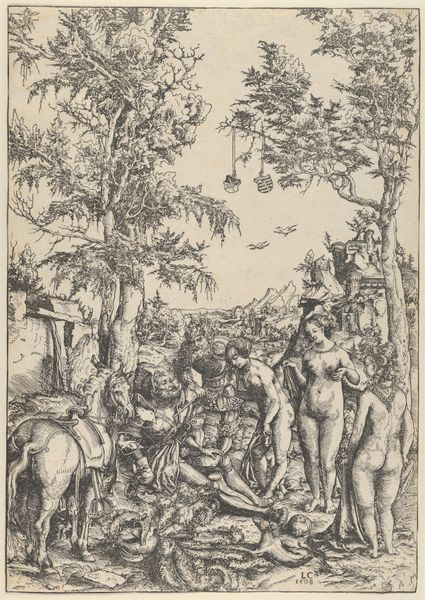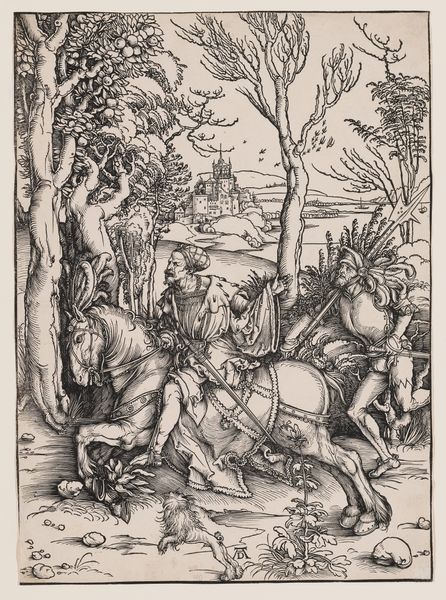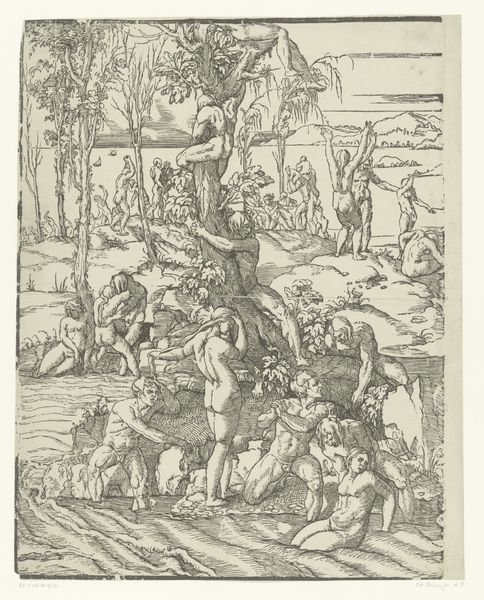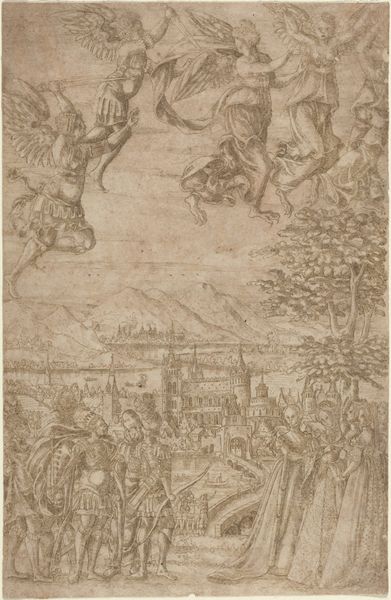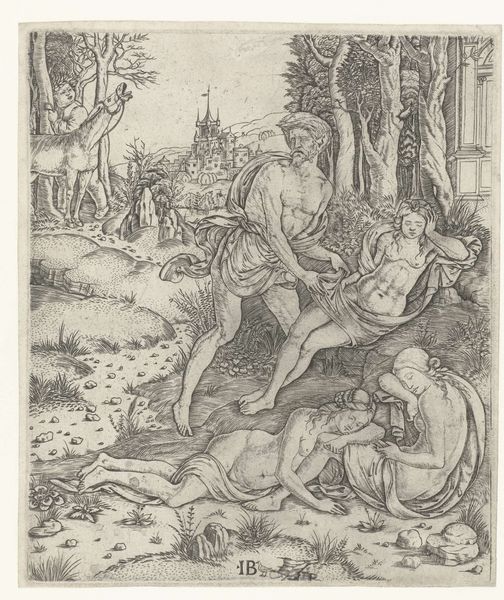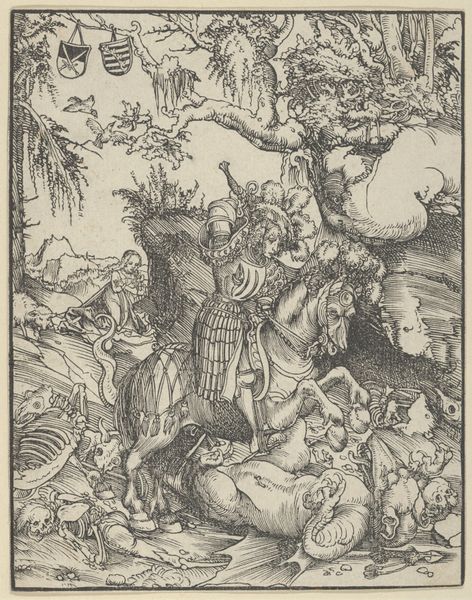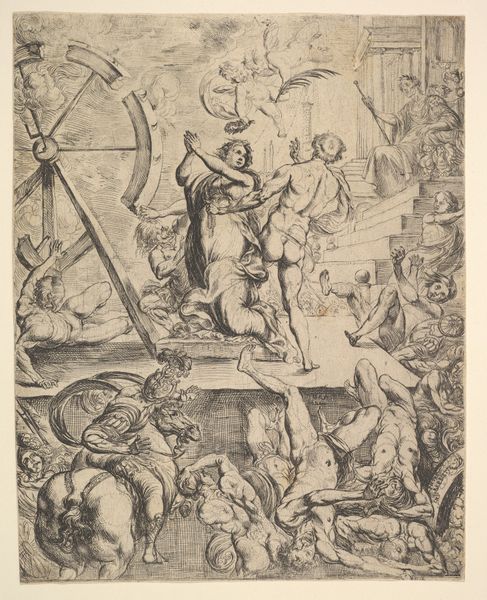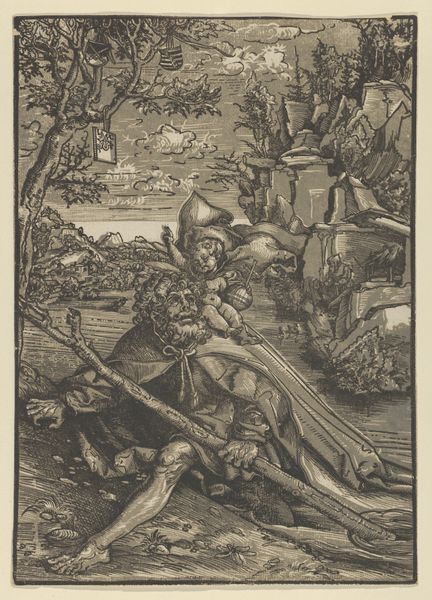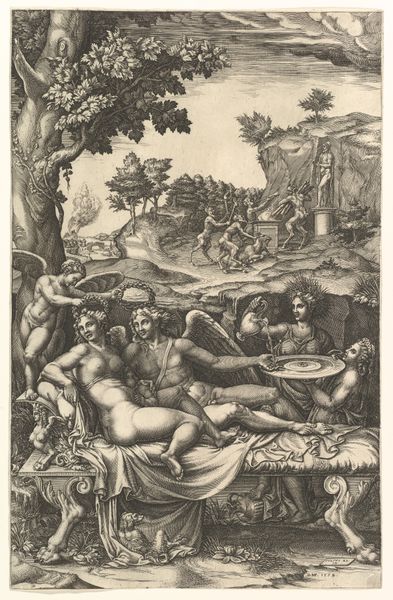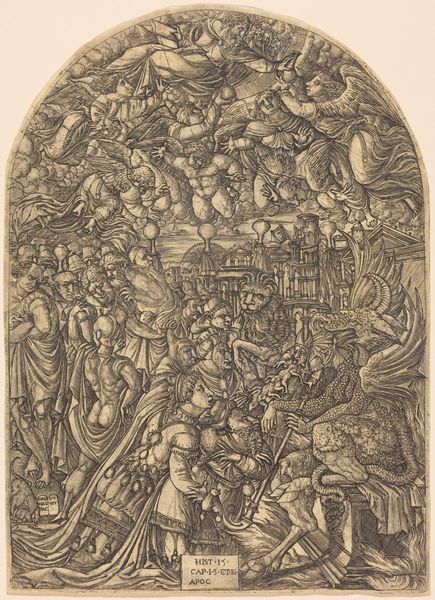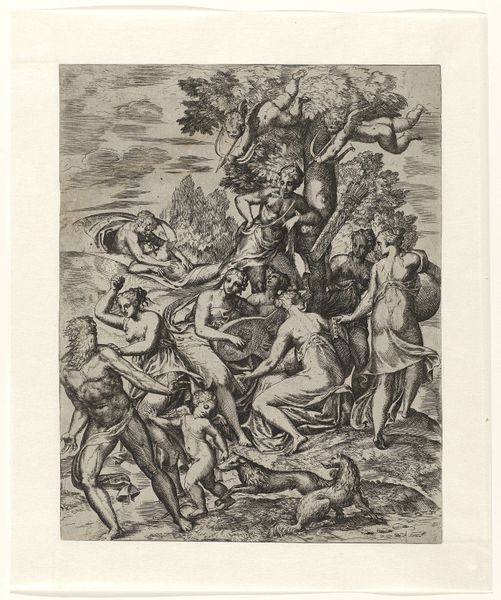
Battle between cavalry and infantry in a wood 1500 - 1563
0:00
0:00
drawing, print, ink
#
drawing
#
ink drawing
#
weapon
#
medieval
# print
#
pen sketch
#
pencil sketch
#
landscape
#
figuration
#
11_renaissance
#
ink
#
pencil drawing
#
horse
#
history-painting
Dimensions: sheet: 9 1/2 x 8 11/16 in. (24.2 x 22 cm)
Copyright: Public Domain
Curator: Welcome. Let’s turn our attention to Hieronymus Hopfer’s "Battle between cavalry and infantry in a wood," created sometime between 1500 and 1563. It's a captivating print rendering of chaos. Editor: Absolutely chaotic. It's a maelstrom of bodies, human and equine, locked in some desperate struggle within a dark forest. There's an immediate sense of brutality and fear. Curator: Indeed. Hopfer's mastery lies in his dense use of line to convey both the texture of the forest and the dynamic energy of the battle. Notice how the closely packed figures create a nearly impenetrable thicket of limbs and weapons. The composition pulls the eye in, swirling around the central conflict. Editor: It’s striking how nude the figures are, particularly. This seems almost an appeal to some idea of the classical hero, idealized and distanced from the grime and barbarity that surely would have characterized an actual battle in the 16th century. What are we meant to think about the glorification of violence in this idealized setting? Curator: It is interesting. I find it less about glorification and more about formal concerns. The lack of clothing removes the distraction of period-specific details. We can focus purely on the musculature and the dynamism of the figures—forms interplaying with light and shadow, each other, as purely aesthetic components in an elaborate choreography. Editor: But aren’t you being deliberately naïve? We must consider how war always reflects very precise power dynamics. This sort of imagery certainly could be seen as an endorsement of violence by a ruling class who benefited from controlling populations. Perhaps these nude figures suggest vulnerability under the guise of heroic form? Curator: Possibly. But looking closer, note Hopfer's exquisite hatching and cross-hatching, giving volume and dimension to the forms. His expert handling of the medium draws the viewer into the scene, compelling us to engage with the sheer formal complexity of the image. The landscape itself, so densely packed with lines, feels alive and active. Editor: Even that densely worked forest underscores my argument. What is more oppressive than a space in which one has nowhere to go? Trapped, naked men on horses in the thick of violence… perhaps we are meant to recognize them for their vulnerability. Regardless, it’s clear that our interpretation of this violent landscape shifts when we explore both its aesthetic execution and historical milieu. Curator: Yes, it seems that even in such a classical structure there are ways to examine it through history and culture. Editor: Precisely. Let us, then, appreciate Hopfer’s craft but view it with a discerning eye—one attuned to art’s formal qualities and to its socio-historical resonances.
Comments
No comments
Be the first to comment and join the conversation on the ultimate creative platform.
